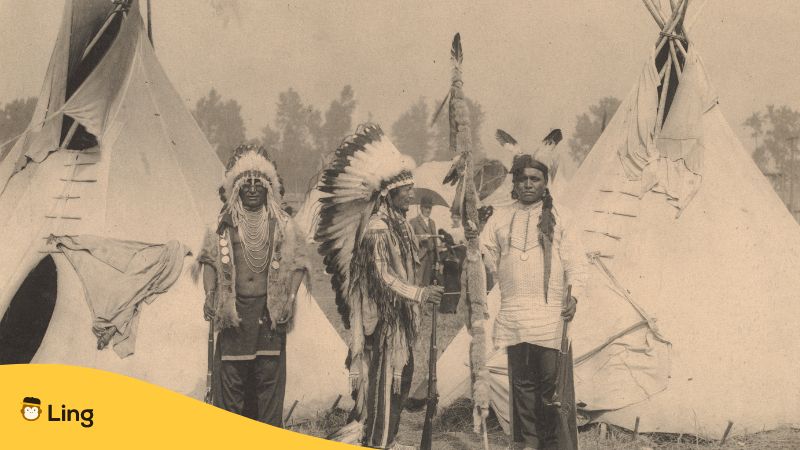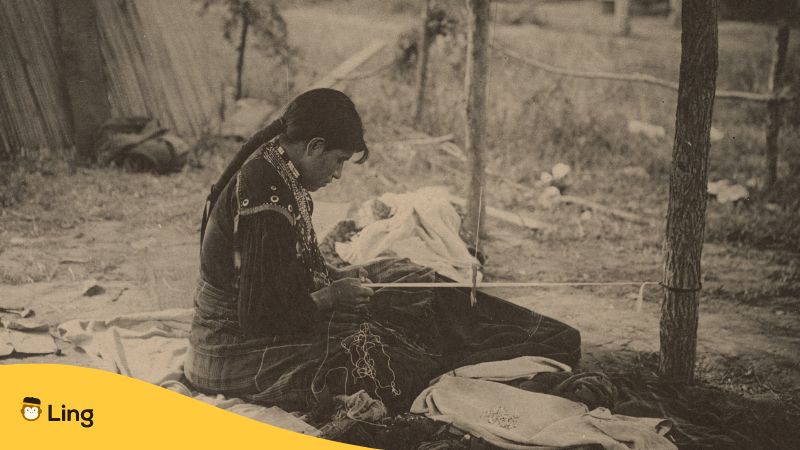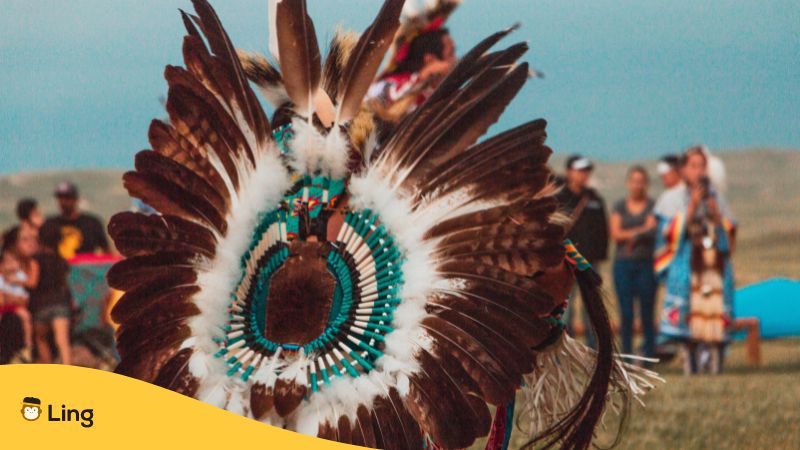Have you heard much about Native American languages in modern discourse? Me either! As we explore the rich and diverse cultures of Native American tribes across the United States, we cannot ignore the importance of their languages. Native American languages are an integral part of their identity and heritage, and they have been passed down from generation to generation.
Today, we will take a closer look at some of the most common Native American languages in the United States, their history, and the importance of preserving them for future generations!
A Brief History Of Native American Languages
Native American languages are as diverse as the tribes’ themselves! Some of the various Native American languages include:
1. Cherokee
2. Navajo
3. Sioux
4. Apache
5. Hopi
6. Mohawk
7. Ojibwe
8. Zuni
These languages have been spoken for thousands of years and have evolved over time. They were originally passed down orally from generation to generation, with no written form. It wasn’t until the arrival of Europeans that these languages began to be written down.
Before the arrival of Europeans, there were over 300 Native American languages spoken across North America. These languages were diverse and complex, with unique grammar structures, vocabularies, and pronunciation.
However, with the colonization of the Americas, many of these indigenous languages were lost due to forced assimilation, disease, and displacement. Most Native American children were taken from their families and sent to boarding schools where they were punished for speaking their native language.
Despite these challenges, many Native American languages have survived to this day. However, they are still at risk of being lost forever, which is why preservation is so important!
Common Native American Languages

1. Cherokee
The Cherokee language is spoken by the Cherokee Nation, which is one of the largest tribes in the United States. The language has a unique writing system that was developed by Sequoyah in the 19th century. Here are some interesting facts about the Cherokee language:
– It has six vowels and 16 consonants.
– Cherokee is a polysynthetic language, which means that words are formed by combining multiple morphemes.
– The Cherokee Nation offers language classes and immersion programs to preserve the language (maybe one is near you!)
Here are some common Cherokee phrases:
| English | Cherokee |
| Hello | ᎣᏏᏲ (Osiyo) |
| Thank you | ᏍᎩᏱ (Sgi) |
| Goodbye | ᏂᎦᏓ (Ni-ga-da) |
| I love you | ᏔᎵᏁᎢᎬᎢ (Wa-do-hv-je-ga-i) |
2. Navajo

The Navajo language is spoken by the Navajo Nation, which is the largest tribe in the United States. It is a tonal language (like Thai indian languages or Mandarin), which means that the pitch of a word can change its meaning. Here are some interesting facts about the Navajo language:
– It has four tones: high, low, rising, and falling.
– Navajo is a verb-based language family, which means that verbs are more important than nouns!
– The Navajo Nation has created a language immersion school to preserve the language.
Here are some common Navajo phrases:
| English | Navajo |
| Hello | Yá’át’ééh |
| Thank you | Ahéhee’ |
| Goodbye | Hágoónee’ |
| I love you | Ayóó Ánííníshní |
3. Lakota

The Lakota language is spoken by the Lakota Nation, which is one of the three tribes that make up the Great Sioux Nation. It is a complex language with many, many nuances. Some interesting facts about the Lakota language include:
– It has three genders: masculine, feminine, and neuter.
– Lakota is an agglutinative language, which means that words are formed by adding suffixes to a root word.
– Yup, you guessed it: The Lakota people have established language schools and immersion programs to preserve the language.
Preserving The Native American Languages

Preserving Native American languages is crucial not only for the preservation of the culture and language families but also for the future of linguistic diversity. Here are some ways that Native American languages are being preserved:
1. Language Immersion Programs – Many tribes have started language immersion programs where children are taught their native language from a young age. These programs have been super successful in keeping the indigenous language used alive and passing it down to future generations!
2. Language Documentation – Linguists and anthropologists are working with Native American communities to document their languages. This includes recording native speakers, creating dictionaries, and developing writing systems for previously unwritten native languages.
3. Language Revitalization – Some tribes are working to revitalize their language by incorporating it into everyday life. This includes using the language in ceremonies, naming places in the language, and even creating modern words for new concepts.
Common Phrases in Native American Languages

Here are some common phrases in some of the most common Native American languages not mentioned earlier:
Sioux:
– Hello: Hau
– Thank you: Pilamaya
– Goodbye: Toksa ake
Apache:
– Hello: Ya’at’eeh
– Thank you: Da’ha’aałtsooí
– Goodbye: Ha’go’
Hopi:
– Hello: Nuq’ta
– Thank you: Taw ma ha si
– Goodbye: Nguruhpi
Mohawk:
– Hello: Sekon
– Thank you: Wliwni
– Goodbye: Sakot
Ojibwe:
– Hello: Boozhoo
– Thank you: Miigwech
– Goodbye: Baamaapii
Zuni:
– Hello: Yat nan ka’wa
– Thank you: Ko’ko’
– Goodbye: Hushiiva
Want more interesting articles about worldwide languages? Check out Silly French Idioms & Most Beautiful Festivals Worldwide.
Conclusion
The Native American languages are an important part of the United State’s history and should be celebrated and preserved! By learning these languages, we can gain a deeper understanding of Native American culture and connect with their rich heritage. We hope this post has inspired you to learn more about these fascinating languages and the people who speak them!
Do you want to learn more about these niche languages but don’t know where to start? Try out the Ling App, a user-friendly language learning app with proven features to help you learn (+ understand) a new language.
You can download it for free on the App Store and Play Store.



































































